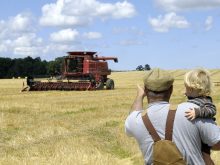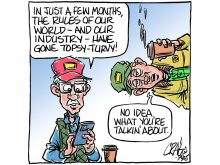In the land Down Under, it’s already tomorrow.
Australia is fair dinkum distance away, as Calgary bureau
news reporter Barbara Duckworth could tell you after her flight to Sydney last week.
Duckworth is on a three-week assignment to explore Australia’s cattle industry. As the Western Producer’s cattle specialist, she’ll be looking at how the world’s largest beef exporter is managing its industry and trade, and she’ll look at it from a Canadian perspective.
Before BSE appeared on the landscape in 2003, Australia trailed the United States in beef exports, with Canada in the number three spot. When beef export opportunities closed to the North American industry, Australia was in an ideal position to fill in the gaps, particularly in Japan and South Korea.
Read Also

Crop profitability looks grim in new outlook
With grain prices depressed, returns per acre are looking dismal on all the major crops with some significantly worse than others.
It didn’t happen overnight, of course. The Australians have been working on beef trade expansion for years.
When Japanese customers expressed a taste for grain-fed beef, as evidenced by their enthusiastic consumption of North American product, Australia developed a feedlot industry. In 1990, most Australian beef was finished on grass. Now the country finishes about 2.5 million head each year in feedlots.
The Aussies have invested heavily in livestock research to develop strong genetics, enhanced food safety and a grading system said to be compatible with Japan’s discriminating requirements. They’ve made a point of servicing international markets and in recent years the cattle industry has enjoyed record profitability.
As you can imagine, Aussie cattle producers aren’t anxious to give that up and they’re taking an active role in maintaining their number one export position. That’s one reason they are willing to pay a checkoff of about $6 Cdn per head, approximately double the Alberta rate and three times that of some other cattle-producing provinces.
As the Canadian cattle industry recovers from the damage sustained during the BSE crisis, information about competitors will be crucial to its success. That’s why we felt it worthwhile to have our cattle expert explore and report to you about this major competitor.
Duckworth plans to meet with the Australian Meat and Livestock Commission to explore food safety and grading standards. She has scheduled interviews with beef exporters, producers and feedlot personnels. She’ll visit sale yards and auction markets and plans to attend a beef show.
And while she’s doing all that, we expect she’ll also be gauging the effects of Australia’s extensive drought to see what implications it has for that country and this one.














